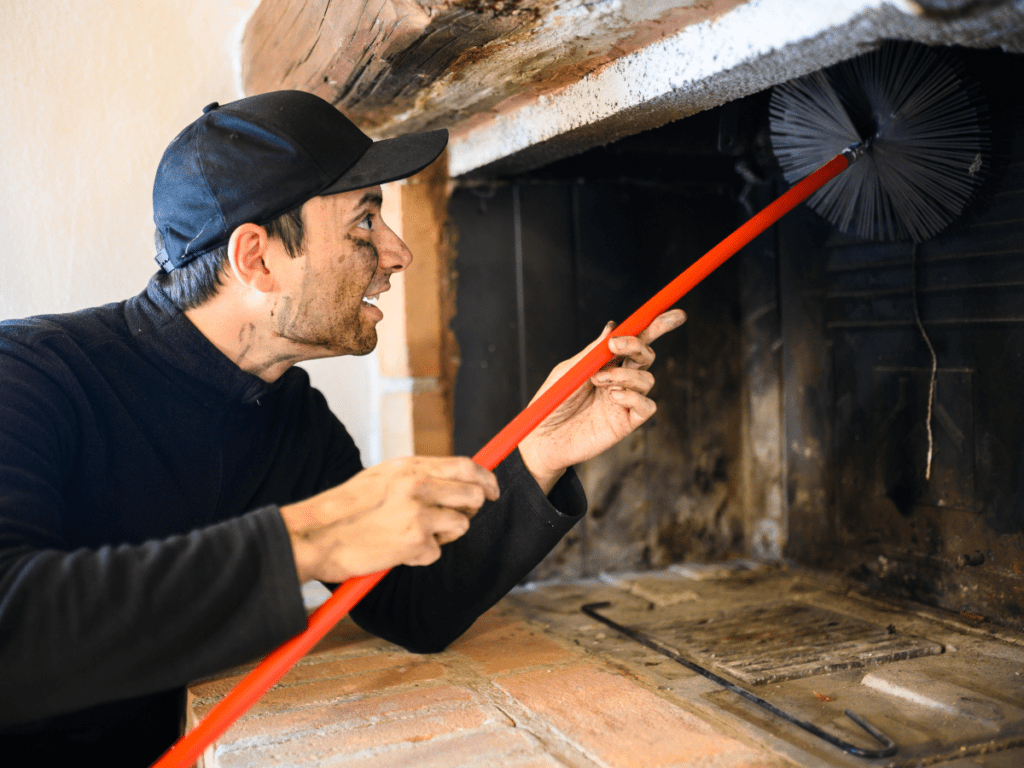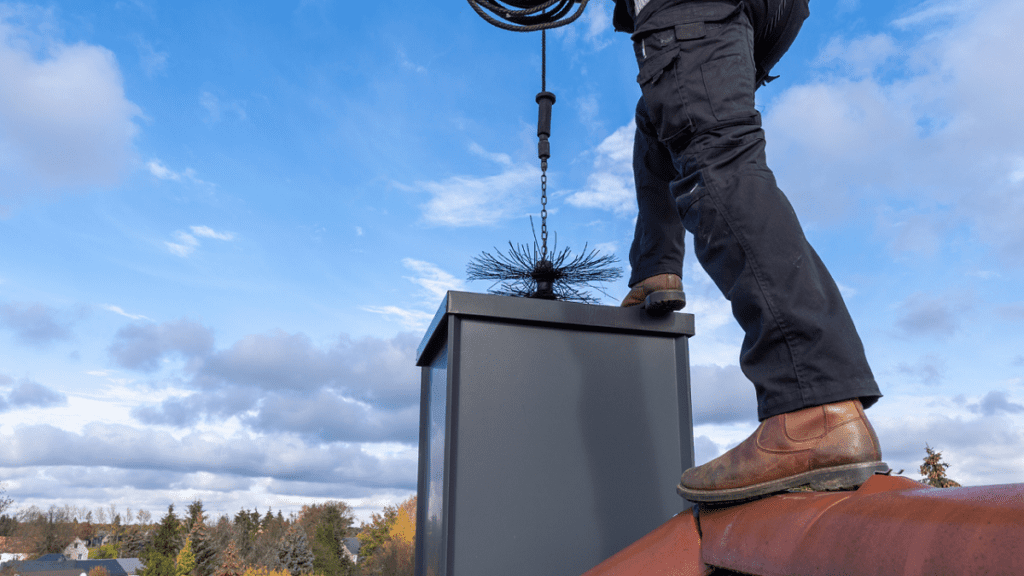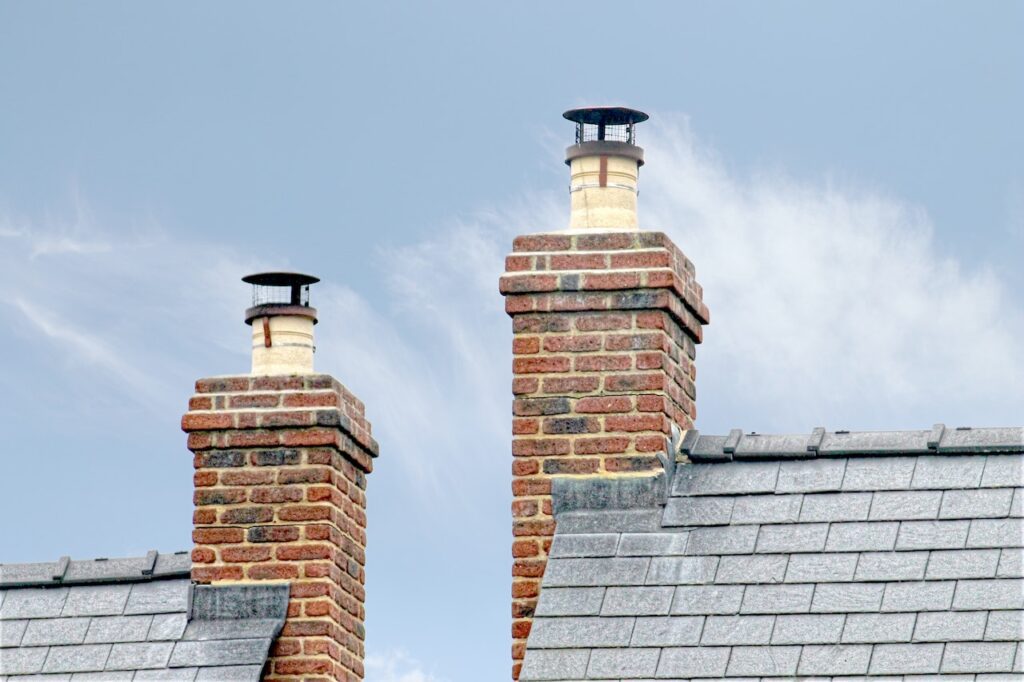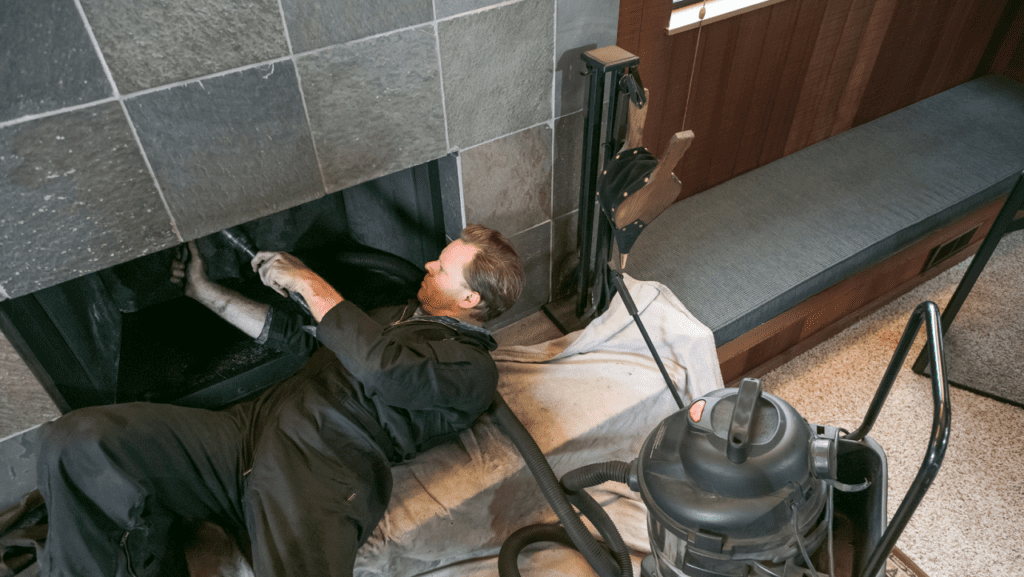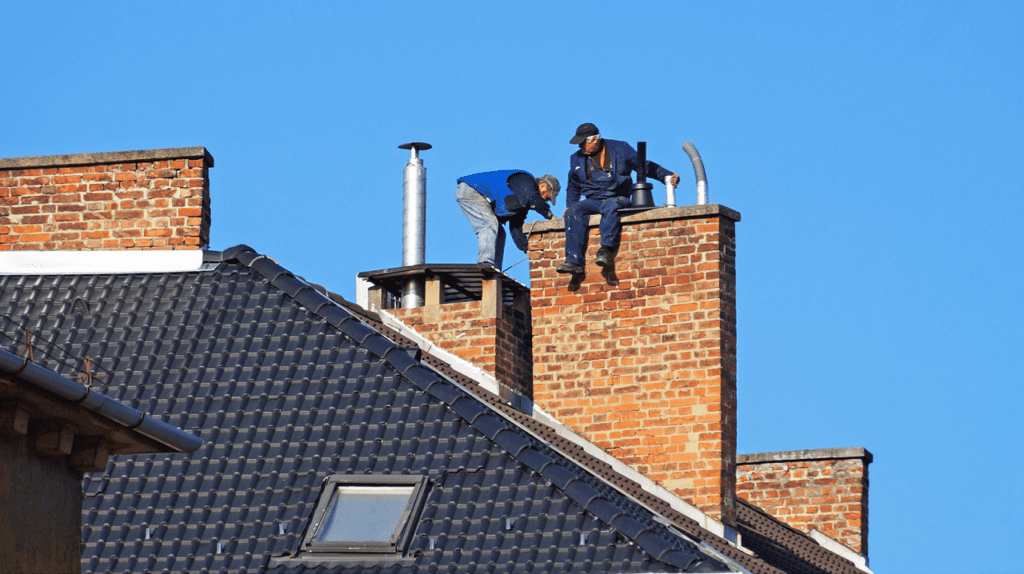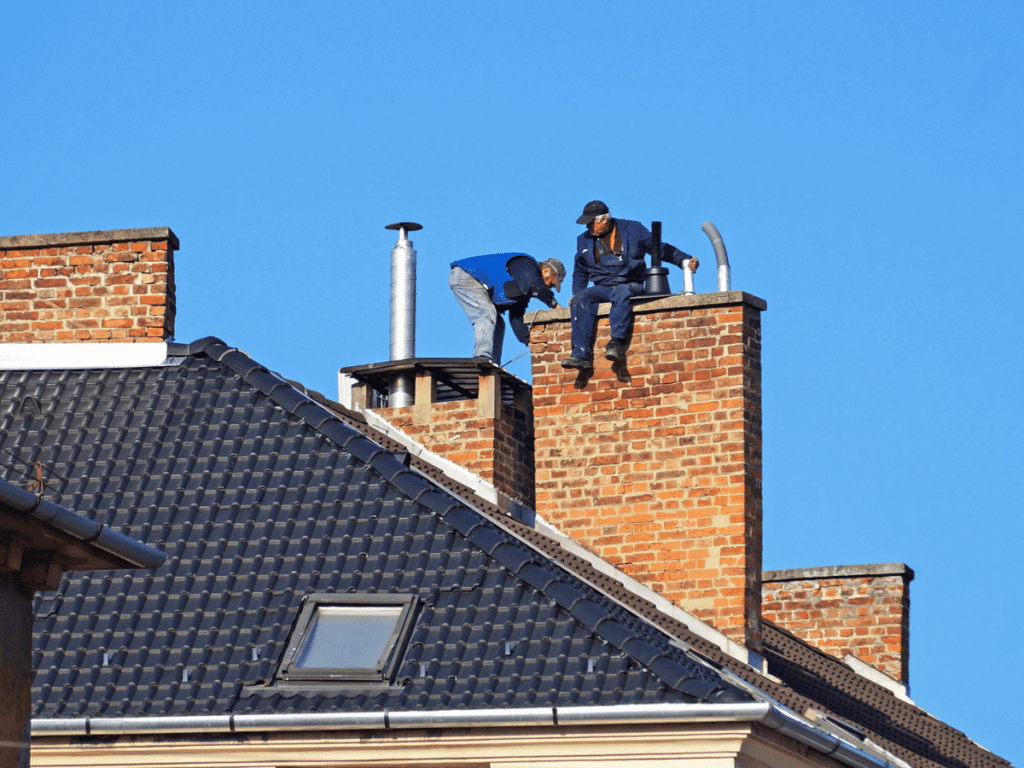
A brief history of chimney sweeping
Chimney sweeping dates back to the 16th century when chimneys became popular in Europe. As more homes began using coal and wood for heating, there was a growing need to clean the soot and debris accumulated in chimneys.
Chimney sweeps were often hired to do this dirty job by homeowners or landlords. During the Industrial Revolution, chimney sweeping became even more important as factories and mills required chimneys to be cleaned regularly.
Children were often used as chimney sweeps because they could fit into small spaces and were cheap labor. Unfortunately, this practice led to many injuries and deaths due to dangerous working conditions.
Importance of chimney sweep for home safety
Today, chimney sweeping is crucial for home safety. If not properly maintained, chimneys can become a fire hazard, causing damage to your home or even putting your family at risk. In addition, soot and debris can accumulate inside the chimney over time, leading to blockages that prevent proper ventilation of smoke and harmful gases. Therefore, hiring a professional chimney sweeper is essential for homeowners who use fireplaces or woodstoves regularly.
These professionals are trained to inspect chimneys for cracks or other damage that could cause problems. Chimney sweeps also use brushes and other tools to remove any buildup inside the chimney, preventing fires from starting due to creosote buildup or other debris.
If you haven’t had your chimney inspected in over three years or recently purchased a new home with a fireplace or woodstove, hiring a professional chimney sweep as soon as possible is important. They will give you peace of mind knowing your family is safe while enjoying the warmth of your heart on cold winter nights.
What is a Chimney Sweep?
Chimney sweeping is an age-old profession that has been around for centuries. It involves cleaning, maintaining, and repairing masonry chimneys and venting systems.
The primary purpose of chimney sweeps is to ensure that chimneys are functioning safely and efficiently, thereby reducing the risks associated with chimney fires. Therefore, qualified chimney sweeps undergo extensive training to learn about the different types of chimneys, their components, and how they work.
They also learn about potential problems like cracks in liners or flue blockages that can prevent proper venting of smoke from a fire. This knowledge enables them to inspect chimneys thoroughly and advise homeowners on how to keep their hearths safe.
Chimney sweeps use specialized equipment like brushes, rods, vacuums, and cameras to create a safe environment for fireplaces or wood stoves. Old-fashioned brushes are still used to scrape off soot from the walls in masonry flues and gas exhaust pipes.
Modern vacuums with HEPA filters remove dust particles accumulated inside the chimney walls over time. Sometimes cameras are used to inspect areas not visible otherwise, but this is not always necessary if done right.
Tools & equipment used by Chimney Sweeps
Chimney sweeps rely on specific tools to do their job effectively. Brushes come in various shapes and sizes – round or square – depending on the shape of your flue liner or exhaust pipe (if gas-fueled). A qualified sweep will know which brush size they need based on your specific type of chimney system.
A professional-grade vacuum cleaner designed for chimney cleaning (as opposed to a standard household vacuum) is also necessary for any competent sweep. The industrial-grade vacuums are more powerful than those found in households because they’re built for heavy-duty cleaning jobs like removing creosote buildup from chimney walls.
These vacuums also come with HEPA filters that capture fine particles and ensure the cleanest possible air quality for your home and the sweep. Sometimes, it may be necessary to reline your chimney or repair cracks in its structure.
A qualified chimney technician needs to assess your chimney’s structural integrity before work can begin. This is why hiring a qualified professional with experience in all aspects of chimney repair and cleaning is essential.
Hiring a certified chimney sweep can save you money in the long run by keeping your home safe and reducing risks associated with fire. So next time you need your chimney inspected or cleaned, hire a qualified professional to do the job right!
Why Do You Need a Chimney Sweep?
The Importance of Regular Chimney Cleaning and Maintenance
Chimneys are essential to any house with a fireplace, but most homeowners neglect to have their chimneys cleaned regularly. This neglect can lead to serious hazards like chimney fires and carbon monoxide poisoning.
A chimney sweep is responsible for cleaning your chimney’s soot, creosote, debris, and bird nests. In addition, burning wood or other combustible materials in your fireplace or stove creates a buildup that must be cleaned out regularly.
Regular chimney maintenance is crucial because it helps prevent fires caused by creosote buildup. Creosote is a dark sticky substance that builds up on the inner walls of your chimney after prolonged use without cleaning.
It’s highly combustible and can ignite easily, leading to a dangerous fire in your home. However, by having your chimney cleaned by a qualified professional at least once every year or two, you can avoid this hazard entirely.
Risks Associated with Dirty Chimneys
Dirty chimneys pose various risks to homeowners beyond the risk of fire from creosote buildup. The most significant risk associated with dirty chimneys is carbon monoxide poisoning.
Carbon monoxide gas is odorless, colorless, and tasteless; hence it’s known as the “silent killer.” If your home’s fireplace hasn’t been cleaned for an extended period or has cracks in its liner, causing gases to escape into the house rather than being vented through the flue system correctly, you risk carbon monoxide exposure. Another issue associated with dirty chimneys is that they decrease the efficiency of combustion processes within house heating systems resulting in increased energy costs.
The soot buildup caused by uncleaned chimneys restricts airflow within combustion chambers. This leads to incomplete combustion, resulting in lower heat production output and higher amounts of pollutants released into the atmosphere. To avoid these hazards, having your chimney cleaned by a qualified professional as soon as possible is vital.
How to Choose a Chimney Sweep
There are several factors to consider when it comes to finding the right chimney sweep. First, you want to ensure that you hire a professional who is experienced and skilled in cleaning chimneys to ensure your home is safe from fire hazards. Here are some tips on how to choose a chimney sweep:
Factors to Consider When Choosing a Professional Chimney Sweep
First and foremost, you want to ensure that the chimney sweep you hire is certified by the National Fire Protection Association (NFPA). This certification ensures that the chimney sweep has undergone rigorous training and knows how to inspect and clean chimneys properly. Additionally, you should check if they have liability insurance.
If anything goes wrong during their service, their insurance will cover it rather than forcing you to pay for damages. You should also check their experience level before hiring them.
Ask how long they have been in business and how many chimneys they have serviced. An experienced chimney sweep will know how to identify common issues like build or cracks and care for them before they become significant problems.
Questions to Ask Before Hiring
Before hiring a chimney sweep, ask them about their services and get an estimate for cleaning your chimney. You should also inquire about when they would be able to schedule an appointment and their availability for emergency services.
You may want to ask if they provide any additional services, such as relining or replacing parts of your fireplace or stove. Some sweeps also offer dryer vent cleaning, which can save you money on your electric bill by improving efficiency.
Take your time when choosing a chimney sweep. A little research can go a long way in ensuring your home is safe from fire hazards caused by combustion in your wood-burning fireplace or stove.
Chimney Sweep Techniques
Different Methods Used for Cleaning Chimneys
When it comes to cleaning chimneys, a variety of techniques can be used. The most common technique is the “top-down” method, which involves starting at the top of the chimney and working your way down. This method effectively removes large chunks of debris and creosote, but it can be time-consuming and messy.
Another technique is the “bottom-up” method, which involves starting at the bottom of the chimney and working your way up. This method is faster than the top-down method and produces less mess, but it may not be as effective at removing stubborn creosote deposits.
There is the “rodding” technique, which involves using specialized rods to scrape away debris from inside the flue. This technique is often used with other methods to ensure a thorough cleaning.
Advantages and Disadvantages of Each Technique
Each chimney sweep technique has its own set of advantages and disadvantages. For example, the top-down method effectively removes large chunks of debris and creosote, but it can be time-consuming and messy.
The bottom-up method is faster than the top-down method and produces less mess, but it may not be as effective at removing stubborn deposits. Therefore, the rodding technique is often combined with other methods to ensure a thorough cleaning.
However, this technique requires specialized equipment that not all chimney sweeps can access. Choosing a chimney sweep who knows all these techniques will ensure that your chimney gets cleaned effectively no matter what kind of buildup or debris needs to be removed from your venting systems.
Most homeowners use woodstoves or fireplaces regularly during winter months for warmth or ambiance when they want to light up a fire on cool nights. Hiring a qualified and trained chimney sweep is crucial because creosote buildup can burn and cause house fires.
Chimney sweeps with experience have the right tools for any job and can quickly recognize debris that needs to be removed or parts that need to be replaced. Regular maintenance on your fireplace or woodstove, including inspections and cleanings, should be done every three years or more often if there is excessive creosote buildup.
A light creosote coating is normal, but anything more requires immediate attention from a professional chimney sweep who can assess the situation. Knowing about different chimney sweep techniques is important when hiring someone to clean your chimney.
With proper training and experience, Chimney sweeps will know which technique will work best for your flue or venting systems. By hiring a qualified professional, homeowners can rest assured that their homes are safe from smoke damage or potential fire hazards caused by dirty chimneys.
Common Problems Found by Chimney Sweeps
Overview of common issues found during inspections
During routine cleaning and inspection, a professional sweep will often uncover several common issues in most chimneys. One of the most prevalent problems is creosote buildup, which can lead to chimney fires if not handled properly. Creosote forms when the wood is burned; over time, it can build up in the flue lining, roof support system, and firebox.
If left unattended for over three years, creosote can ignite and cause a devastating fire that could destroy a home. Another issue commonly found by chimney sweeps is blockages caused by debris or animals like birds or raccoons.
These blockages interrupt proper airflow and venting systems necessary for safe fireplace operation. In some cases, these blockages can also cause carbon monoxide to build up inside the home.
Solutions for fixing these problems
Thankfully, there are solutions to these common problems found during chimney inspections. First, regular maintenance and cleaning are important to prevent creosote buildup from occurring in the first place. If creosote has already formed inside the flue lining or other areas of the chimney system, it must be removed immediately.
When it comes to blockages caused by debris or animals, chimney sweeps will use specialized tools like brushes or vacuums to clear out any obstructions safely and efficiently. However, in some rare cases where significant damage is caused by water or neglect over several years, a complete replacement may be necessary.
Regular inspection and maintenance of your wood-burning fireplace and venting systems can help identify issues before they become bigger problems that could result in costly repairs or, even worse – fire damage to your home. By hiring an experienced chimney sweep company that takes pride in their workmanship, you’ll be able to sit back, relax and enjoy the warmth and ambiance of your hearth without worrying about any mess or safety concerns.
The Future of Chimney Sweeping
Technological Advancements in the Industry
As technology advances, chimney sweeping is beginning to see some exciting changes. One major area of advancement is in the development of chimney inspection tools.
In the past, inspectors relied primarily on visual inspections or a flashlight to spot potential issues. However, cameras and other devices can now provide a much more thorough examination of a chimney’s interior.
This means qualified professionals can detect problems earlier and more precisely than ever before. Another area where technology is making a big impact is the materials used for chimney construction.
New materials offer improved durability and efficiency compared to older methods, meaning that chimneys will need less maintenance and will last longer overall. As these new materials become more commonplace, we can expect to see them being used in more and more homes.
New Techniques Being Developed
In addition to new technologies, innovative techniques are being developed for cleaning chimneys. One promising development is the use of “top-down” cleaning methods. Traditionally, chimney sweeps would start by cleaning out the firebox at the bottom of your chimney and then work their way up through the flue with brushes or other tools.
The top-down approach involves starting at the top of the chimney instead, which can be more efficient and effective overall. New methods are also being developed for removing creosote from chimneys without damaging them in the process.
Creosote buildup can be a serious issue because it increases your risk of a house fire if left unaddressed for too long. In addition, using chemicals or harsh scraping tools can cause damage to your flue lining or masonry, so finding gentler removal techniques is an important goal for many professionals.
As we move into an increasingly technological age, it’s exciting to see how these developments will shape the future of chimney sweeping. By staying up-to-date with the latest techniques and technologies, qualified professionals can provide safer and more effective chimney cleaning services for homeowners everywhere.
Frequently Asked Questions
What did chimney sweeps do?
Chimney sweeps cleaned and maintained chimneys, using brushes and other tools to remove soot, debris, and creosote buildup from the chimney flues.
What does it mean to chimney sweep?
The term "chimney sweep" refers to a person who cleans and inspects chimneys to ensure their proper functioning and safety.
What were chimney sweeps called?
Chimney sweeps were often called "sooty boys" or "climbing boys" in the past, as children were commonly employed for this dangerous and physically demanding job.
What is a fact about chimney sweep?
Chimney sweeps play a significant role in preventing chimney fires by removing highly flammable creosote buildup from chimneys, reducing the risk of dangerous and destructive fires.
What is the chimney sweep about the summary?
The story revolves around a young chimney sweep named Tom, who is accidentally transported into a magical world inside a chimney. He embarks on adventures, overcomes challenges, and ultimately finds his way home.
Why is a chimney sweep Lucky?
Chimney sweeps are considered lucky in some cultures, symbolizing good fortune and protection against fires and other misfortunes. This belief originated from the association of chimney sweeps with preventing chimney fires and their role in maintaining household safety.
Conclusion
Final Thoughts: Keeping Your Home Safe and Warm
Chimney sweeping may seem messy and unnecessary, but it is essential to the safety and efficiency of your home’s venting systems. Regular cleaning and maintenance by a professional chimney sweep can prevent chimney fires, ensure proper ventilation, and increase the lifespan of your chimney.
Homeowners should schedule chimney inspections every three years or more frequently if they use their wood-burning fireplace or wood stove regularly. Soot buildup, debris, and other hazards can accumulate in chimneys over time, leading to dangerous conditions that put your home at risk.
Encouragement to Schedule Regular Cleanings
Don’t wait until disaster strikes before hiring a professional to inspect your chimney. Hiring a qualified service to complete the job can give you peace of mind that your home is safe from fire hazards.
A professional chimney sweep will have the necessary equipment, knowledge, and experience to clean all venting system areas thoroughly. Regular cleanings can also save you money on repairs in the long run by identifying potential problems early on.
By catching issues before they escalate into something more significant, homeowners can avoid costly repairs or even total replacement of their chimneys. Maintaining a clean chimney is crucial for keeping your family safe while enjoying the warmth of a fire in your home.
Don’t overlook this critical task! Schedule regular cleanings with a qualified professional today for peace of mind knowing you’ve taken every precaution to protect your loved ones from harm.

